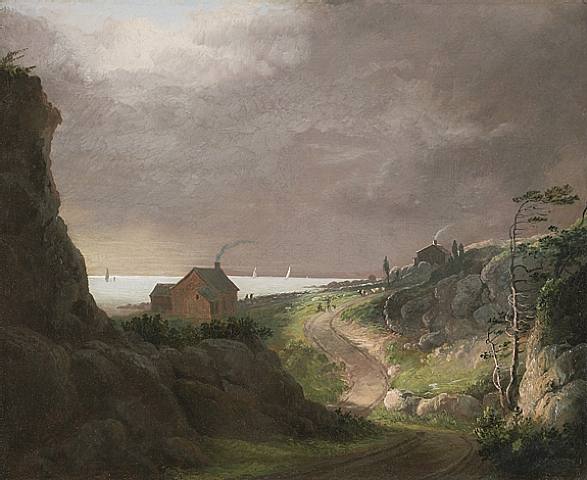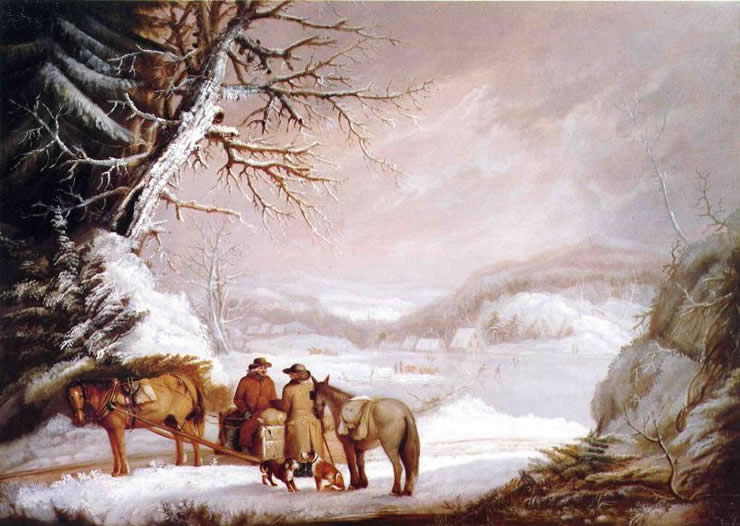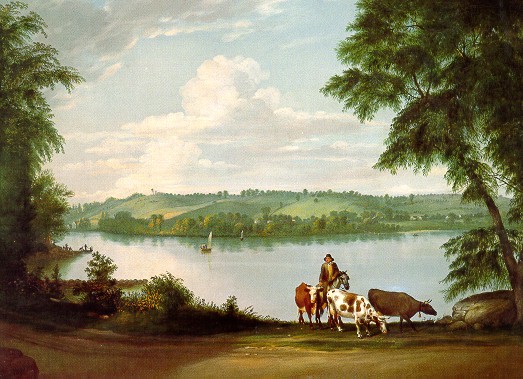Alvan Fisher (1792-1863)
Get a Fisher Certificate of Authenticity for your painting (COA) for your Fisher drawing.
For all your Fisher artworks you need a Certificate of Authenticity (COA) in order to sell, to insure or to donate for a tax deduction.
Getting a Fisher Certificate of Authenticity (COA) is easy. Just send us photos and dimensions and tell us what you know about the origin or history of your Fisher painting or drawing.
If you want to sell your Fisher painting or drawing use our selling services. We offer Fisher selling help, selling advice, private treaty sales and full brokerage.
We have been authenticating Fisher and issuing certificates of authenticity since 2002. We are recognized Fisher experts and Fisher certified appraisers. We issue COAs and appraisals for all Fisher artworks.
Our Fisher paintings and drawings authentications are accepted and respected worldwide.
Each COA is backed by in-depth research and analysis authentication reports.
The Fisher certificates of authenticity we issue are based on solid, reliable and fully referenced art investigations, authentication research, analytical work and forensic studies.
We are available to examine your Fisher painting or drawing anywhere in the world.
You will generally receive your certificates of authenticity and authentication report within two weeks. Some complicated cases with difficult to research Fisher paintings or drawings take longer.
Our clients include Fisher collectors, investors, tax authorities, insurance adjusters, appraisers, valuers, auctioneers, Federal agencies and many law firms.
We perform Alvan Fisher art authentication, appraisal, certificates of authenticity (COA), analysis, research, scientific tests, full art authentications. We will help you sell your Alvan Fisher or we will sell it for you.

Alvan Fisher was an early American landscape painter. Born in Boston, Fisher studied under John Ritto Penniman, learning decorative painting techniques. However, Fisher aspired to be an artist and wanted to do more than paint ornamental designs on furniture. Eventually, Fisher taught himself to paint, and had his own studio in 1814. By 1816 he was creating rural paintings of barnyards and farm life. These paintings were fairly original and unique at the time when the majority of artists were creating portraits and historical scenes.


Though he was highly recognized for his portraits during his lifetime, it would be Fishers’ landscape compositions that would earn him his mark in history. Fisher continued to paint his unique rural scenes and mainly painted portraits to support himself. He was a successful enough painter to support himself on his commissions alone and was relatively active in the Boston art community. In 1817, Fisher held his first exhibit with the Pennsylvania Academy of Fine Arts. He also showed his work later on with the National Academy of Design as well as the Boston Athenaeum.




In 1825, Fisher traveled to Europe where he created many sketches and studied at the many schools in Paris. While in Paris he also spent a great deal of time copying masterworks at the Louvre. He also traveled extensively throughout the east coast of the United States creating landscapes of the places he would visit. In 1827, he was named an honorary member of the National Academy of Design, and continued to paint almost right up until his death in 1863.



Some art historians credit Fisher as being the first native born American to devote his artistic career to landscape painting. Fisher started out painting his landscapes in a highly formulaic manner, relying on the English school of landscape painting for inspiration. These early paintings were typically bracketed with trees in the English fashion and had other elements of English landscape. However, as he traveled through different American landscapes, Fisher began to change as an artist and developed a landscape style of his own. Instead, Fisher preferred to paint a more natural, realistic landscape that represented what he really saw.


In general, Fishers’ oeuvre consists of these pastoral, idyllic landscapes dotted with cows and farmsteads. However, he also painted national landmarks, such as the Niagara Falls and prominent rivers. He was especially fond of painting landscapes of the mountains in Vermont and New Hampshire.



Though he was extremely talented in landscapes, art historians say that the majority of his work was in fact creating portraiture. Fisher was able to find a few patrons over the years for his not yet fashionable landscapes, but in order to support himself, he mainly painted portraits. For this reason, one would probably be more likely to find an unauthenticated portrait by Fisher than a landscape. And on that note, a landscape by Fisher would surely be a treasured piece, full of historic and artistic value.


Still wondering about an early American landscape hanging in your home? Contact us…it could be by Alvan Fisher.
